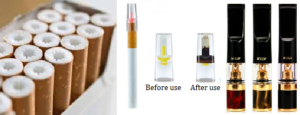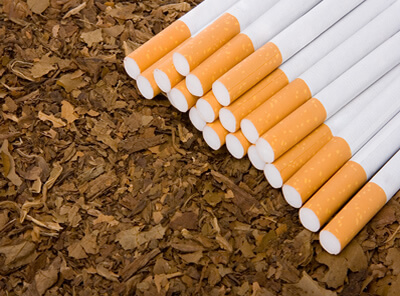Have you ever wondered how the cigarette filters influence your smoking experience? Filters are a matter of preference for those who roll up their own cigarettes, but they do come with benefits. Here are the details of what makes up a filter and how that make smoking experience more enjoyable.
Mainly four components are in use to make cigarettes; tobacco, additives, cigarette wrapper aka rolling paper and filters. Filters usually size 20 to 30 mm in length. They are placed at the holding end of the cigarette and are meant to minimize the amount of smoke inhaled. Cigarette filters are specifically absorbs vapor. They also prevent tobacco from entering a smoker’s mouth. Filters serves as a mouthpiece of cigarette and prevent it from crumpling while smoking it.Filters serves as a mouthpiece for the cigarette. Filters help to remove tar and other nasty substances from cigarette smoke without altering the taste of your favorite cigarettes.
Most of the cigarette filters are made of cellulose acetate, a plastic material. The other materials in use to make filters are glass wool, papers and rayon. The cellulose acetate tows are thinner than cotton thread. Packing them tightly together creates a filter. The various filters available vary in filtration efficiency. Even though filters are in use to make smoking less dangerous and more pleasant, the design of cigarette filters only prevents a minimal portion of smoke from being inhaled.

Some of the filters come with an inner paper wrapper known as plug rap. This paper used to wrap the acetate cellulose plug is normally air resistant for regular cigarettes, but ventilated and very porous for light cigarettes. Wrapped around the filter is the tipping paper. This tipping paper contains small ventilation or vent holes. These vent holes allows fresh air in to mix with smoke, diluting the toxic mix of chemicals inhaled. But unfortunately, these holes often gets blocked by your fingers or lips making them no useful. They are often printed to look like cork. Tipping paper formulates the end to not adhere to the lips of smokers.
Using a filter tip gives stability to the base of your rolled cigarette. It reduce the possibility of you ending up crumbling your cigarette while ashing it. Rolling up one without a filter means at the end you will get a roach to deal with. Filters help you to smoke out all the tobacco in your rolled one, right down to the very bottom. As mentioned, filter also facilitates more consistent airflow through your cigarette.
Even though they have positive impacts on overall smoking experience, health studies show that smoking filtered cigarettes do not eliminate the negative sides of cigarette smoking. Filters do not protect you from bad chemicals and some kind of the filters, like glass wool filters, do have drawbacks like during smoking, the fibers can come off into your mouth and end up into your lungs. But overall, when you use a filter, you can see the tar accumulated on it. Thus preventing the tar and other debris from entering your lungs which otherwise will stick to your teeth, gums, throat and lungs.

